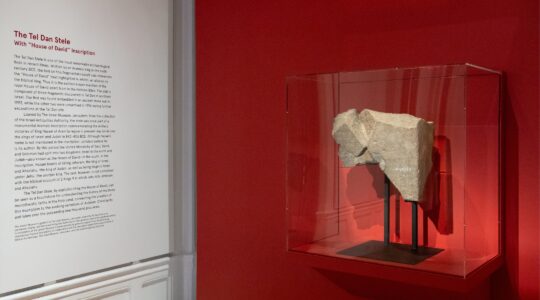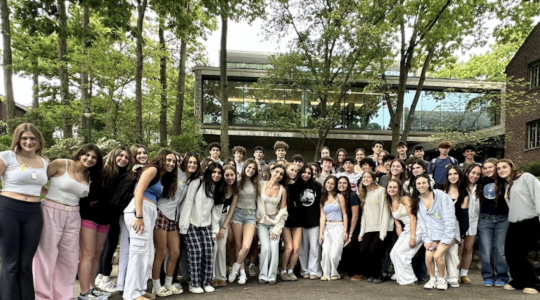The tiny moshav village of
Mikhmoret is just a half-hour from Tel Aviv’s glamorous high rises, busy street scene and thumping discos.
Yet to people like Dana Bendik, who moved to Mikhmoret from the nearby resort city of Netanya eight years ago, Mikhmoret is a world away from the Tel Aviv bustle.
“There are not so many people here; it’s not so developed. That’s why we like it,” said Bendik, who runs Cactus Ranch, a horseback-riding facility nestled in the Tel Gador nature reserve. “It’s not so fast as life in Tel Aviv. Everyone here is just enjoying the beach.”
People have enjoyed the beaches of Israel’s central coast since ancient times. But until recently — and largely because of a lack of tourist infrastructure — Mikhmoret and its neighboring beach settlements of Nuweiba and Beit Yanai were known only to a few Israelis. Tourists from abroad tended to overlook the area in favor of the blockbuster resorts of Tel Aviv, Netanya and Haifa.
But that’s changing, thanks to a new hotel and a collective effort to raise Mikhmoret’s profile.
As the area’s fishing tradition gives way to international tourism, residents of Mikhmoret — sometimes spelled Michmoret — are cautiously spreading the word about their pristine coves, wild cliffs and abundant natural attractions. In an under-the-radar way that perfectly suits local sensibilities, Mikhmoret is becoming something of a cult favorite among the European backpacking crowd. Russian and American families with children and Israeli urbanites have also been coming lately, seeking a low-key beach getaway.
“It’s a quiet place, but there is a whole lot going on,” said Adam Atzion, a lifelong resident and enthusiastic promoter of the new tourism efforts. A year and a half ago, noting that travelers had nowhere to stay but local rooms and cabins to let, Atzion opened The Resort, Mikhmoret’s first full-service hotel.
With accommodations ranging from family apartments to backpacker dorms, The Resort has solidified the area’s status as an up-and-coming coastal destination. But it’s still a far cry from Netanya — a mere 10 minutes to the south — or Tel Aviv, which, like Haifa, is a half-hour away via bus or train connection.
With nary a three-story building in sight, this is a lush, green patch of Eden wedged between two turquoise bays and the HaSharon National Park. Mikhmoret itself is home to a mere 1,000 residents and almost as many turtles, who claim priority on the beach to lay eggs this time of year, while locals tiptoe respectfully along the cliffs.
The northern stretch of this three-mile beach zone is Nuweiba, the wildest and least developed of the three towns. With a wide, lovely stretch of sand and just a few sleepy beachside restaurants, Nuweiba draws romantic couples, nature lovers and birdwatchers.
Just south of Mikhmoret proper is Beit Yanai, whose breezy beach is especially popular with the windsurfing crowd. As the sun sets and the afternoon cools, things heat up at Beit Yanai’s beach bars, where a peppy, 20-something crowd dances to reggae.
Mikhmoret also has a lively after-dark scene, fueled largely by students at the local marine science college. Karaoke, cocktails and rave parties are standard fare at the Banana Beach Bar and Inigo, two reliable watering holes, while Kinzey Bar hosts live music year-round.
Support the New York Jewish Week
Our nonprofit newsroom depends on readers like you. Make a donation now to support independent Jewish journalism in New York.
Many of those singing along are backpackers from Europe, especially Germans and Scandinavians, Atzion has noticed. That’s party because, for a place that seems off the beaten path, Mikhmoret is actually right smack on Israel’s biggest path of all: the Israel National Trail. The Trail extends from the Lebanese border down to Eilat, hugging the Mediterranean coast in the area around Mikhmoret, where it cuts right through HaSharon Park.
The National Trail’s inauguration in the mid-1990s brought a new influx of adventure-lovers to these quiet villages for the first time. “The last few years, you see more and more of them — people with big backpacks on their backs,” said Adam Atzion, who added that these hikers form the core of his clientele.
They’re drawn in large part by the seemingly endless list of outdoor activities. You can rent a kayak or take a weekend sailing class at the Mikhmoret Marina; cycle the newly paved trails along Alexander Creek, where mountain water flows into the sea; or perfect your kite surfing alongside the experts at Surf Point kite surfing school, which has classes for all levels. The local scuba diving club also rents out equipment and takes beginners for dives amid the colorful reefs of Mikhmoret Bay.
At Cactus Ranch, Dana Bendik tends to 45 horses and a menagerie of peacocks, goats, dogs cats and rabbits. She and her staff lead visitors aged eight and up on horseback rides along the cliffs and tide pools; the exceptionally smooth sand, she says, keeps rides gentle even for first-timers. For romantic couples, “the guides will take them to the beach at sunset, drop them off with wine, cheese, a blanket, some vegetables, and then pick them up a few hours later for the ride back,” Bendik explained.
That friendly, rustic vibe, locals say, is what sets Mikhmoret apart from the slick urban tourism elsewhere on the coast. “We take care of the atmosphere of this place,” Adam Atzion said. He’ll pick guests up personally from the local bus and train interchange, and lend them bicycles free of charge so they can explore the local scenery. The Resort hosts bonfires on the beach, complete with roasted marshmallows, so visitors can make friends and exchange stories together.
“Everyone here has horses or kayaks that they are riding on the beach. They’re enjoying life,” said Bendik. “We’re all free spirits here.”
The New York Jewish Week brings you the stories behind the headlines, keeping you connected to Jewish life in New York. Help sustain the reporting you trust by donating today.




